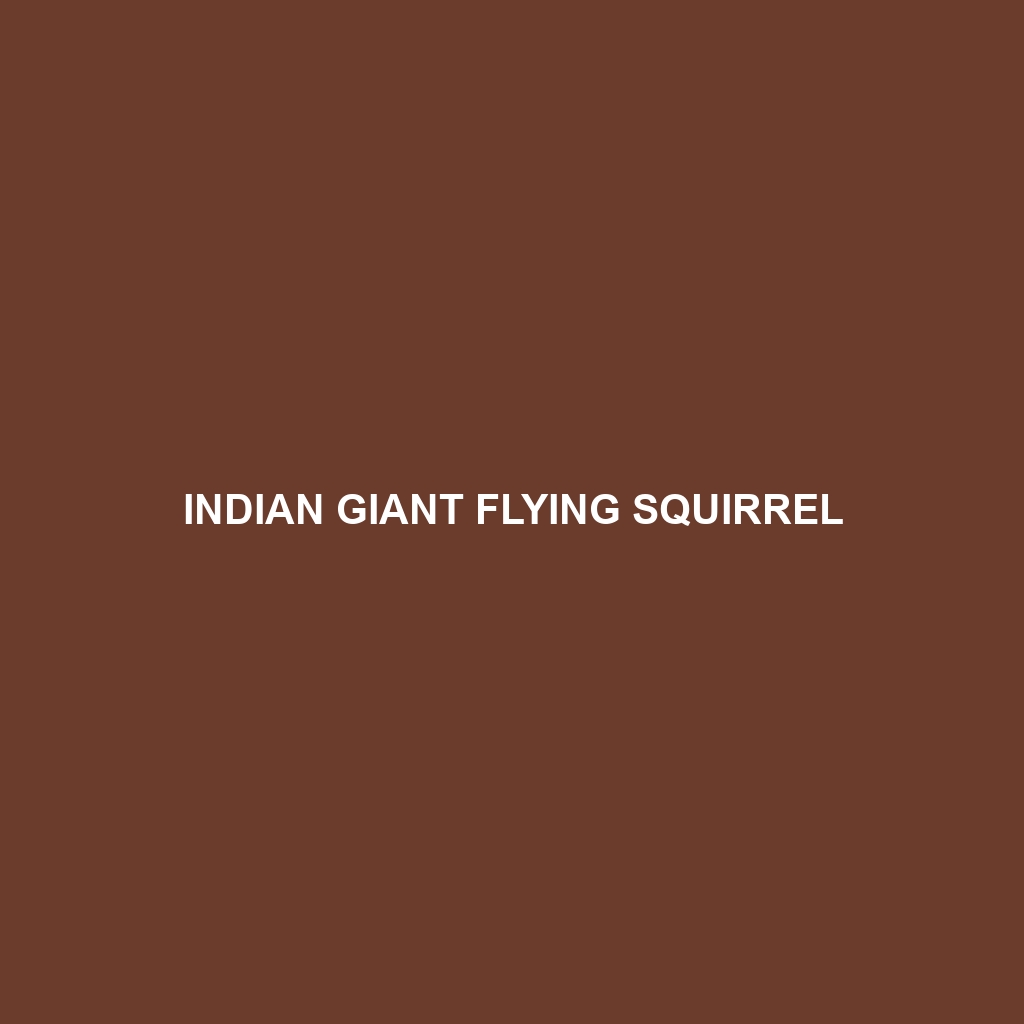Indian Giant Flying Squirrel
Common Name: Indian Giant Flying Squirrel
Scientific Name: Petaurista philippensis
Habitat: The Indian Giant Flying Squirrel is primarily found in the forests of the Indian subcontinent, particularly in regions such as the Western Ghats, the Northeast Indian forests, and parts of Indo-China. These squirrels thrive in humid, evergreen forests rich in biodiversity, preferring habitats with large trees that provide both shelter and gliding opportunities.
Physical Characteristics: The Indian Giant Flying Squirrel is notable for its impressive size, measuring between 60 to 90 cm (24 to 35 inches) in length, including its long bushy tail, which can be almost as long as its body. They have a fluffy, dense fur coat that varies from grayish-brown to reddish hues, providing excellent camouflage among the leaves. Distinctive features include their large eyes adapted for nocturnal vision and a membrane that stretches from their wrists to their ankles, facilitating their remarkable gliding abilities.
Behavior: These squirrels are primarily nocturnal, taking to the treetops at night to forage for food and socialize. Indian Giant Flying Squirrels are social animals, often found in small family groups. They are known for their gliding prowess, using the membrane between their limbs to soar through the air between trees, a behavior that attracts the interest of researchers and wildlife enthusiasts alike. During the day, they rest in tree hollows or leafy nests, making them relatively elusive.
Diet: The Indian Giant Flying Squirrel has a herbivorous diet, primarily consisting of fruits, nuts, and leaves. They play a crucial role in seed dispersal, as they consume large quantities of fruit from various trees and may inadvertently spread seeds through their droppings. This feeding habit not only sustains the squirrels but also contributes to the health of the forest ecosystem.
Reproduction: These squirrels typically breed once or twice a year, with the main breeding season occurring between March and April. After a gestation period of approximately 40 to 50 days, a litter usually consists of two to three young. The offspring are altricial and require extensive parental care, remaining dependent on their mothers for several months as they learn to glide and forage.
Conservation Status: The Indian Giant Flying Squirrel is currently listed as “Vulnerable” by the International Union for Conservation of Nature (IUCN), mainly due to habitat loss from deforestation and urbanization. Conservation efforts are essential to ensure the survival of this remarkable species as well as the ecosystems they inhabit.
Interesting Facts: One fascinating aspect of the Indian Giant Flying Squirrel is its ability to glide for distances of up to 150 meters (490 feet), which is quite impressive for an animal of its size. Additionally, they communicate through a series of vocalizations, which can include chatters and whistles, especially during mating seasons.
Role in Ecosystem: As a key player in forest ecosystems, the Indian Giant Flying Squirrel contributes to the regulation of forest dynamics through its role in seed dispersal. By eating fruit and nuts and later excreting the seeds, they help maintain plant diversity. Moreover, their presence serves as an indicator of a healthy and thriving forest habitat, showcasing the interconnectedness of species within their ecosystem.
